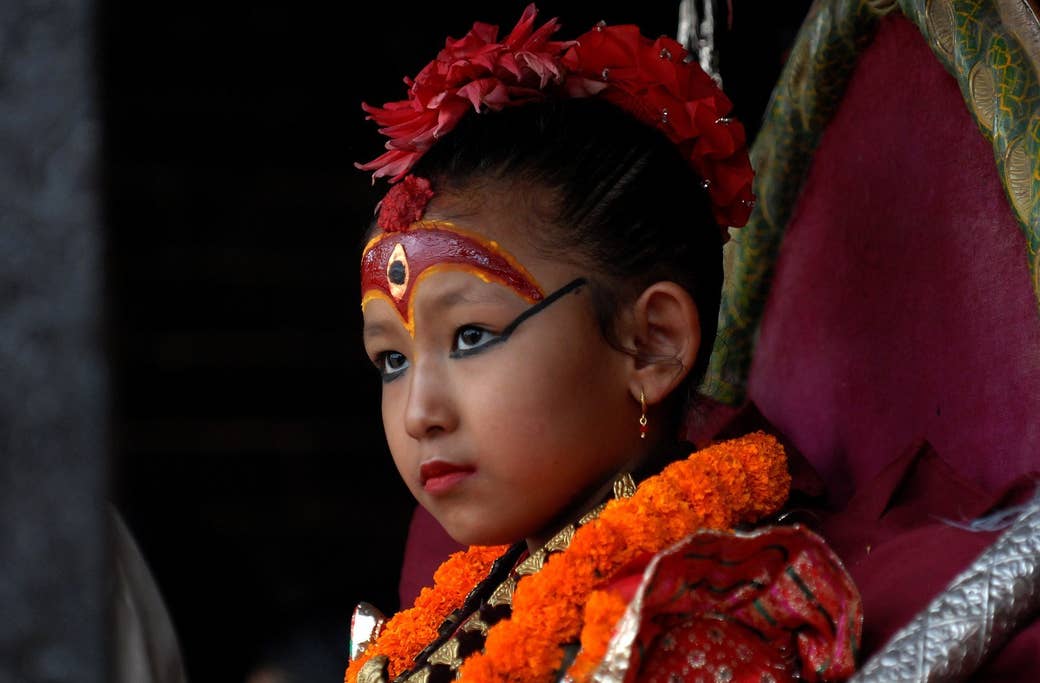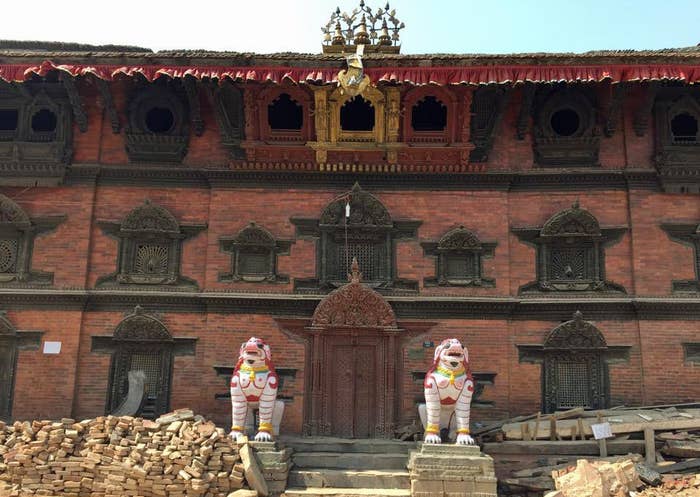
KATHMANDU, Nepal — When the centuries-old temples and monuments started crumbling one by one in Kathmandu’s Durbar Square three weeks ago, there was one that stood unscathed: an 18th-century temple that is home to Kumari, Nepal’s living goddess.
“There is not a single crack or damage in the house,” said Gautam Shakya, the guardian of the living goddess, the title of the official caretaker of the house she lives in. “Everyone who was inside the Kumari house was safe that day.”
As Nepal struggles to rebuild after a devastating earthquake that killed more than 8,300 people, many are trying to explain the suffering that has befallen the country, and some have fallen on Kumari, otherwise known as the living goddess.
“Maybe Kumari was angry at being disrespected,” said Shakya, recalling how the morning of the earthquake he and members of the national Newari coalition, the ethnic caste group from which the Kumari is chosen, had met to discuss a piece of artwork that some believed had shown the goddess in a demeaning light.

The worshipping of Kumari dates back to the 18th century. A young girl from the Buddhist Newar caste, believed to be endowed with a set of chosen virtues, is selected to be worshipped as a goddess until she reaches puberty, after which she is replaced by another. At least 11 Kumaris are said to be worshipped within Nepal, but the living goddess in Kathmandu is the best known and considered the most important. Throughout her tenure, the Kumari’s feet never touch the ground, and she is carried by her guardians to a golden palanquin during processions. During major festivals in Kathmandu, Lalitpur, and Bhaktapur, the three cities within the Kathmandu valley, Kumaris from each city are carried in chariots and are worshipped by thousands of Hindus and Buddhists.
The Kathmandu Kumari has made no comment on the earthquake — or on the artwork that some blame for it.
BuzzFeed News requested to speak with her, but no visits have been allowed since the earthquake struck. While foreigners can visit the temple, only Nepalis are allowed to see the goddess in person.
The art in question is a handcrafted work by a local artist that showed a figure resembling the living goddess, in which the iconic red tika on her forehead was made using the cardboard box of a condom packet. The artwork was part of the “Urban Myths” exhibition at the City Museum in Kathmandu.

“I had no intention to disrespect the goddess,” said Sudeep Balla, a 29-year old artist from Bhaktapur, a town on the outskirts of the Kathmandu valley. “The work is a representation of how our society sees women; they are goddesses inside the temples but mere objects outside in society.”
Balla said he intended for his work to be a be a mirror of Nepali society, spreading a message about social issues, and in this case those Nepali women in particular face.
After the controversy, Shakya and his group filed a complaint with the police against Balla and the curator of the museum, Kashish Das Shrestha.
“The Kumari piece was nothing more than a continuation of the ‘violence against women’ theme we’ve been trying to portray through our exhibition,” said Shrestha, who said he has received phone calls verging on threats.
Shrestha said the head of the Newari coalition called him and said, “If people here destroy a meat shop named after Buddha, anything can happen to you because you advertised a condom on a goddess’s forehead.”

Nepal’s art scene, though not entirely new, has evolved in the last decade, with a younger crop of artists pushing boundaries and experimenting. Two years ago, an artist was charged for blasphemy and threatened after displaying a set of paintings on Nepali deities.
“Our artists, for the first time, are making art that are either on par or better than international artists,” said Shrestha, “and I want to promote this younger generation of artists.”
Balla said his use of the condom box was a symbolic one. “It’s not meant to hint at sex; it’s an interpretation of male domination,” he told BuzzFeed News.
Following the earthquake, most local and international publications have written about how the residence of the living goddess, known as Kumari Chen, was the only thing that didn’t collapse. Yet most failed to note that her residence was the only historic temple among at least a dozen that were built in the 1700s to go through extensive renovation — built in 1757, it was renovated in 1966.
Shakya said both Balla and Shrestha should apologize and surrender the art, which he wants to burn in public. He is adamant that the goddess’s power is what saved the temple, and also the foreigners and Nepalis who were inside during the earthquake.
But less than an hour outside of Kathmandu, in the medieval town of Bungamati — which has its own Kumari — the earthquake had shattered almost everything, including the house of its living goddess.

